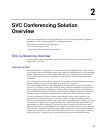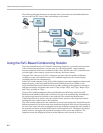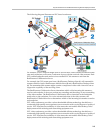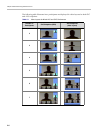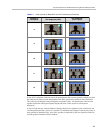
2-1
2
SVC Conferencing Solution
Overview
This chapter describes the Polycom RealPresence SVC Conferencing solution, a general
description of SVC, and using the SVC conferencing solution.
This chapter includes the following topics:
"SVC Conferencing Overview”
"Using the SVC-Based Conferencing Solution”
SVC Conferencing Overview
This section provides a general description of the SVC protocol and video conferencing
using the SVC protocol.
Overview of SVC
The Scalable Video Coding (SVC), an extension of the H.264/MPEG4-AVC video protocol,
is a powerful video compression protocol that enables the standardization of encoding high-
quality video streams to provide scalable adaptation to various application requirements
such as display and processing capabilities of video devices, and varying transmission
conditions.
SVC provides network-friendly scalability at a bit-stream level with a moderate increase in
decoder complexity relative to the single layer H.264/AVC protocol.
SVC enables high flexibility for implementation and optimization in various application
scenarios. It provides a wide-range of display and processing capabilities of target devices
and varying transmission conditions for video conferencing to serve the various needs of
users with different displays and CPUs (video conference endpoints, laptops, tablets, and
mobile phones) connected through different network links such as LAN and wireless.
In video conferencing, efficient scalable video coding provides certain benefits in the
transmission of video streaming. For example, a video conference with heterogeneous
clients where multiple bit streams of the same video content differing in picture size, frame
rate and bit rate should be provided simultaneously. An SVC solution could make use of
simulcasting, in which multiple SVC streams are made available to the different clients,
allowing each client to select the picture size, frame rate, and bit rate that best suits its needs.
This provides a scalable bit stream set from which representations with lower resolution or
quality can be obtained. A video client with restricted resources such as display resolution,
processing power, or battery power, needs to decode the lowest available bit stream.











